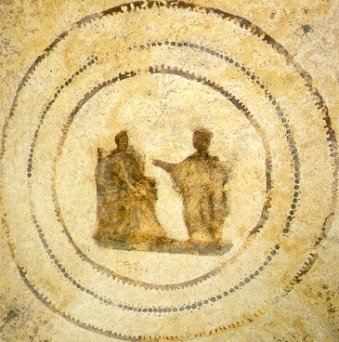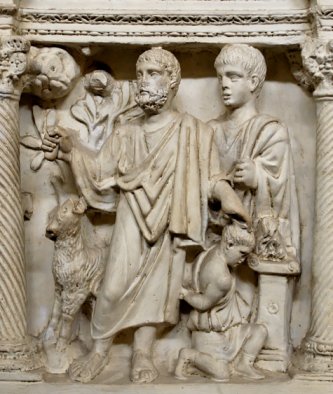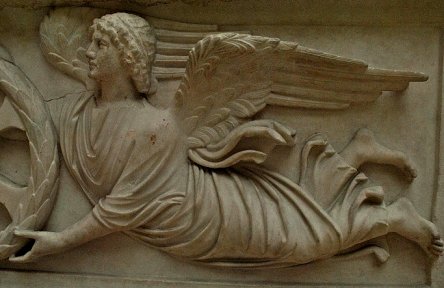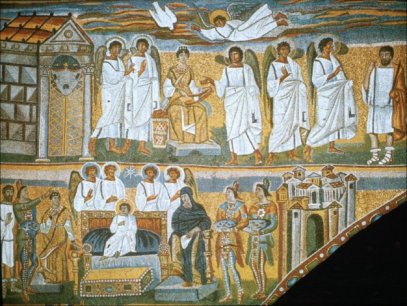|
The Art of Angels |
|
|
The earliest images The very earliest Christian art struggled to find an appropriate iconography. The very earliest depiction of an angel is this early third century image of the Annunciation from the Catacomb of Priscilla in Rome. The angel wears a gown or toga, and does not have wings. Similarly, the angel shown on the sarcophagus of Junius Bassus (c360) trying to talk Abraham out of Sacrificing Isaac has no wings. |
|
 |
 |
|
|
|
|
|
|
|
|
|
| Angels page 1 | On to some flying pagans |
| Home page - explore the site | |
|
|
|
|
|
|

